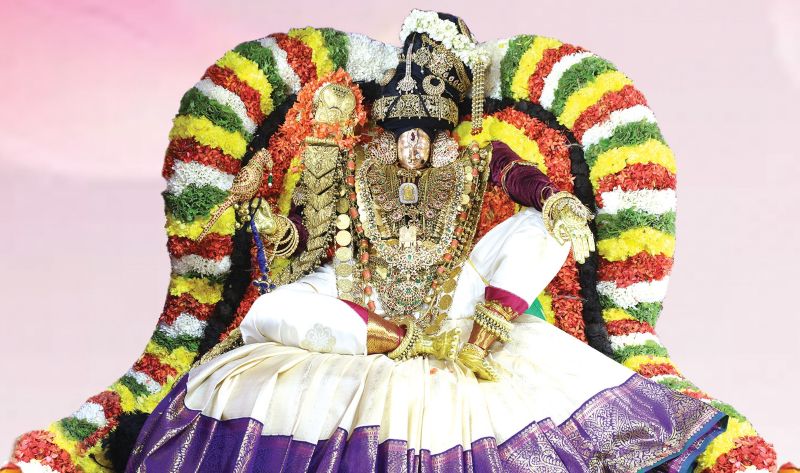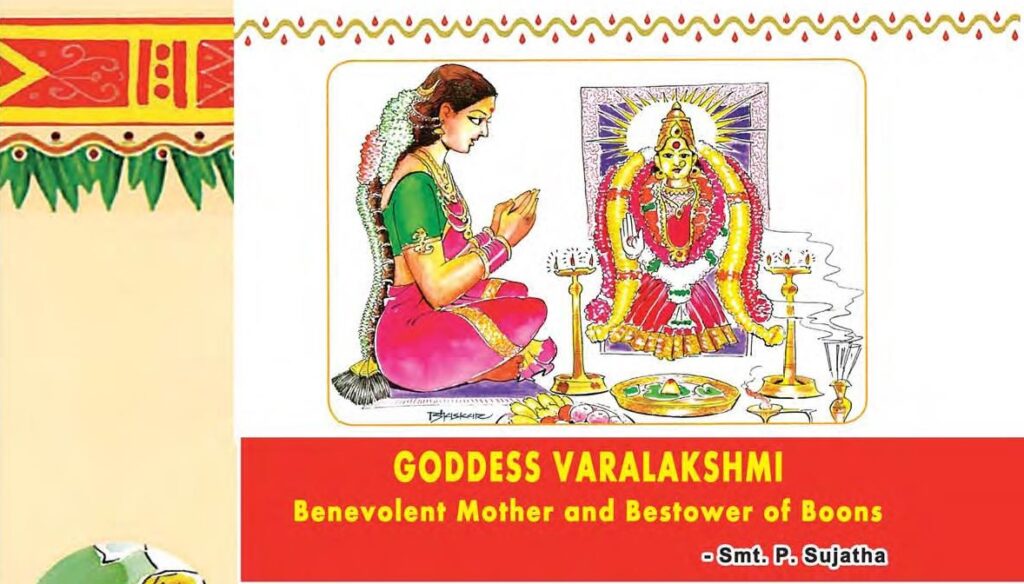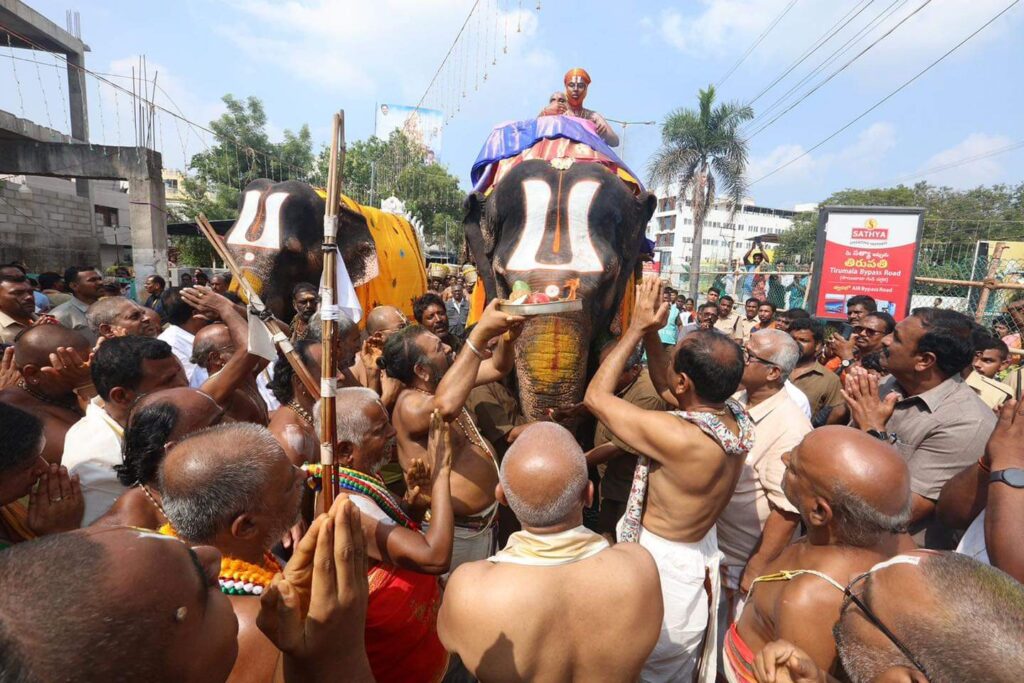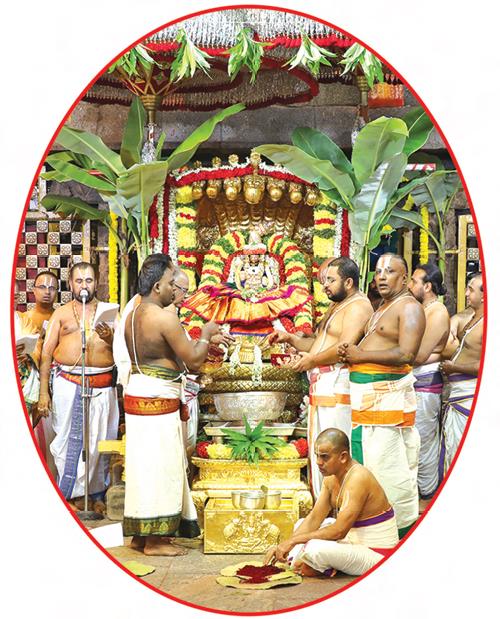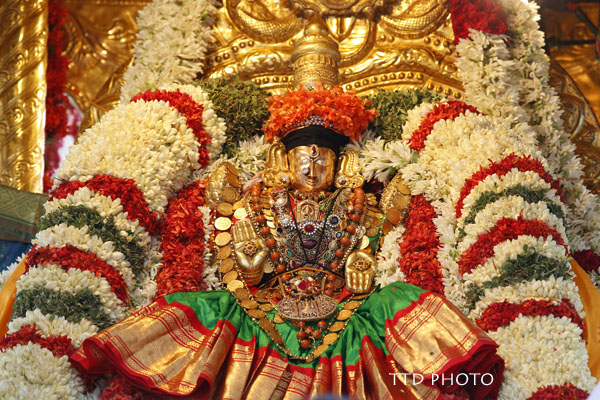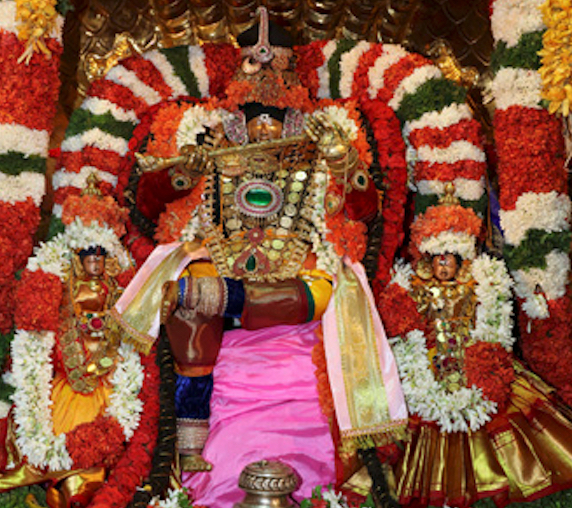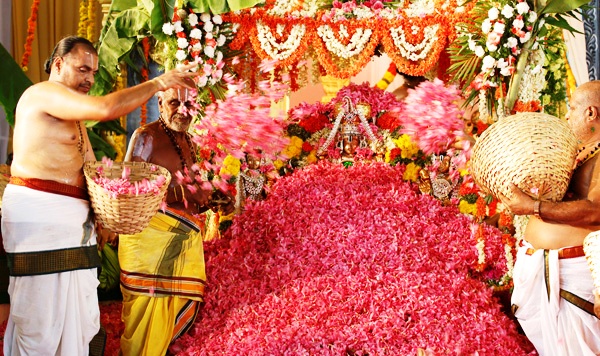Alamelumangapuram Tiruchanur is also called ‘Alamelumangapuram’ located 5 km away from Tirupati, the abode of Goddess Padmavati Devi, the beloved Consort of Lord Venkateswara. It is said that a visit to the temple of Lord Venkateswara is complete only if the pilgrim visits Sri Padmavati Devi temple at Tiruchanur. Click here for Tiruchanur’s Location on Read More
Tag: tiruchanoor
Tiruchanur or Tiruchanoor(also known as Alamelu Mangapuram) is a suburb and neighborhood of Tirupati and is located in Tirupati district of the Indian state of Andhra Pradesh
Immense Grace of Goddess Padmavathi Devi at Tiruchanur
Goddess Padmavathi Devi at Tiruchanur The temple town of Tiruchanur located at the base of Tirumala is the abode of Goddess Padmavathi Devi, the divine consort of Lord Srinivasa. To the millions of devotees pouring in from all over the world, the pilgrimage to the Seven Hills begins with the ‘darshan’ of the Devi. Once Read More
Sri Padmavati Ammavaru Brahmotsavams 2024, Tiruchanur – Majestic Festival of Devotion
Sri Padmavati Ammavaru Brahmotsavams 2024 Tiruchanur, the divine domain of Goddess Sri Padmavati Ammavaru, is one of the highly exalted places in Andhra Pradesh. The temple of Sri Padmavati Ammavaru is situated 5 km from Tirupati town and is exclusively dedicated to Sri Padmavati Ammavaru, the consort of Lord Sri Venkateswara. Tiruchanur Sri Padmavathi Ammavari Read More
Goddess Varalakshmi – Benevolent Mother and Bestower of Boons
Goddess Varalakshmi Every married Hindu woman, mostly in the southern states of our country, propitiates the goddess Lakshmi on this most auspicious day in the month of Shravana. They pray to the goddess Varalakshmi (Lakshmi, the boon-giver)) to provide happiness, wealth, health and longevity to their husbands. In other words, it is a prayer made Read More
Venkateswara’s ‘Saare’ to Sri Padmavathi Ammavaru
Article posted on Saptagiri Magazine by – Dr. Venkata Harshavardhan R.D. Sri Padmavathi Ammavari Kartika Brahmotsavams is a spectacular festival of Tiruchanur and Tirupati. Just as Tirumala Brahmotsavam ends with CHAKRA SNANAM, even Tiruchanur Kartika Brahmotsavam ends with a Chakrasnanam on the auspicious Panchami Teertha day known as ‘Panchami Theertham’. Saare – From Tirumala to Read More
Laksha Kumkumarchana at Padmavathi Temple – Tiruchanur
This article is about Laksha Kumkumarchana at Padmavathi Temple – Tiruchanur Sri Padmavathi Devi temple – Tiruchanur Goddess Padmavathi is the queen of Lord Srinivasa and enjoys a separate identity with equal status. The Goddess is inseparable and enjoys an equal position as she is a Purushakara or instrumental in protecting the devotees from the Read More
Chatusthanarchana – Tiruchanur
ChatusthanArchana Visesham – Tiruchanur The puja vidhi during Brahmotsavams are in the form of Chatusthanarchana (ritual). Every day during the annual fete, the Chatusthanarchana will be performed twice, both in the morning and in the evening at Sri Padmavathi Ammavari Temple. In the morning this ceremony is observed in Yagashala between 5 am to 6 Read More
Avatarotsavams of Sundara Raja Swamy
Avatarotsavams – Three Days Sundararaja Swamy is a Self-emerged God in the auspicious star Uttarabhadra in the Jyestha Masa of Lunar Calendar. The main events of the Avatarotsavams are distributed over the three days beginning on the day with Stabhisha Nakshatra and ending on the day with Uttarabhadra Nakshatra (The Birth Star of Sri Sundararaja Read More
Sri Sundara Raja Swamy
One gracious form of Sri Mahavishnu is that of Sri Sundara Raja Swamy. Location Sri Sundara Raja Swami’s temple is situated as a sub-shrine in the temple complex of Sri Padmavati Ammavaru, the Consort of Sri Venkateswara of Alamelu Mangapuram, Tiruchanur. This temple of Sri Sundararaja Swami is also known as the temple of Sri Read More
Pushpayagam to Padmavati Devi
Pushpayagam (Yagam with Flowers) in Tiruchanur Pushpayagam is performed to Sri Padmavati Devi in Tiruchanur. This is an annual festival that is performed the day after the completion of the annual Brahmotsavam on the asterism of Karthika masa, on the day after Panchami Theertham. After the daily pujas, Goddess Sri Padmavati Devi is seated on Read More

